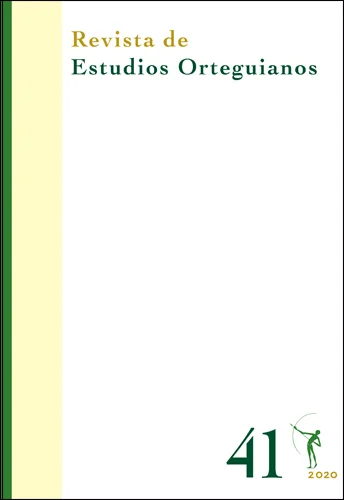The born creator of universes. Anthropology and existential aesthetics in José Ortega y Gasset
DOI:
https://doi.org/10.63487/reo.163Keywords:
Ortega y Gasset, Anthropology, Circumstance, Monster, Indetermination, Project, ArtAbstract
The definition of man is for Ortega the most profound philosophical problem. It is then necessary to ask ourselves what mankind really is. Man is a wolf to man and is, at the same time, a son of God, an Adamic and paradisiacal being, heir to the original sin. Man is possibly the most ill-adapted being to his environment and, consequently, the one who has been forced to transform it until he has practically generated it again from scratch. Man is technique; man is a task always to be done. But man is, above all, life, project, creation of an “I” that stands at the center of a circumstance that belongs to him, that conforms him, that makes him that he himself is.
Downloads
References
BENAVIDES LUCAS, M. (1988): De la ameba al monstruo propicio. Raíces naturalistas del pensamiento de Ortega y Gasset. Madrid: Ediciones de la Universidad Autónoma de Madrid.
CALDERARO, J. D. (1961): La dimensión estética del hombre. Ensayo psicológico sobre el arte. Barcelona: Paidós.
FERRARI NIETO, E (2019): “El recorrido de la analogía metafísica del actor en la comprensión de Ortega de la vida como tarea”, Contrastes. Revista Internacional de Filosofía, vol. XVIII, pp. 319-337.
FERRATER MORA, J (1973): Ortega y Gasset. Etapas de una filosofía. Barcelona: Editorial Seix Barral.
GOLDSCHMIDT, R. (1933): “Some aspects of evolution”, Science, pp. 539-547.
MAILLARD, M. L. (2009): “Ortega y la circunstancia”, Revista de Estudios Orteguianos, 18, pp. 211-227.
MARÍAS, J (1960): Circunstancia y vocación. Madrid: Revista de Occidente.
MARÍAS, J (1948): Ortega y la idea de la razón vital. Madrid: Antonio Zúñiga.
ORTEGA Y GASSET, J. (2001 [1914]): Meditaciones del Quijote, Edición de Julián Marías. Madrid: Cátedra.
ORTEGA Y GASSET, J. (2004-2010): Obras completas. 10 vols. Madrid: Fundación José Ortega y Gasset / Taurus.
ZAMORA BONILLA, J. (ed.) (2013): Guía Comares de Ortega y Gasset. Granada: Comares.





